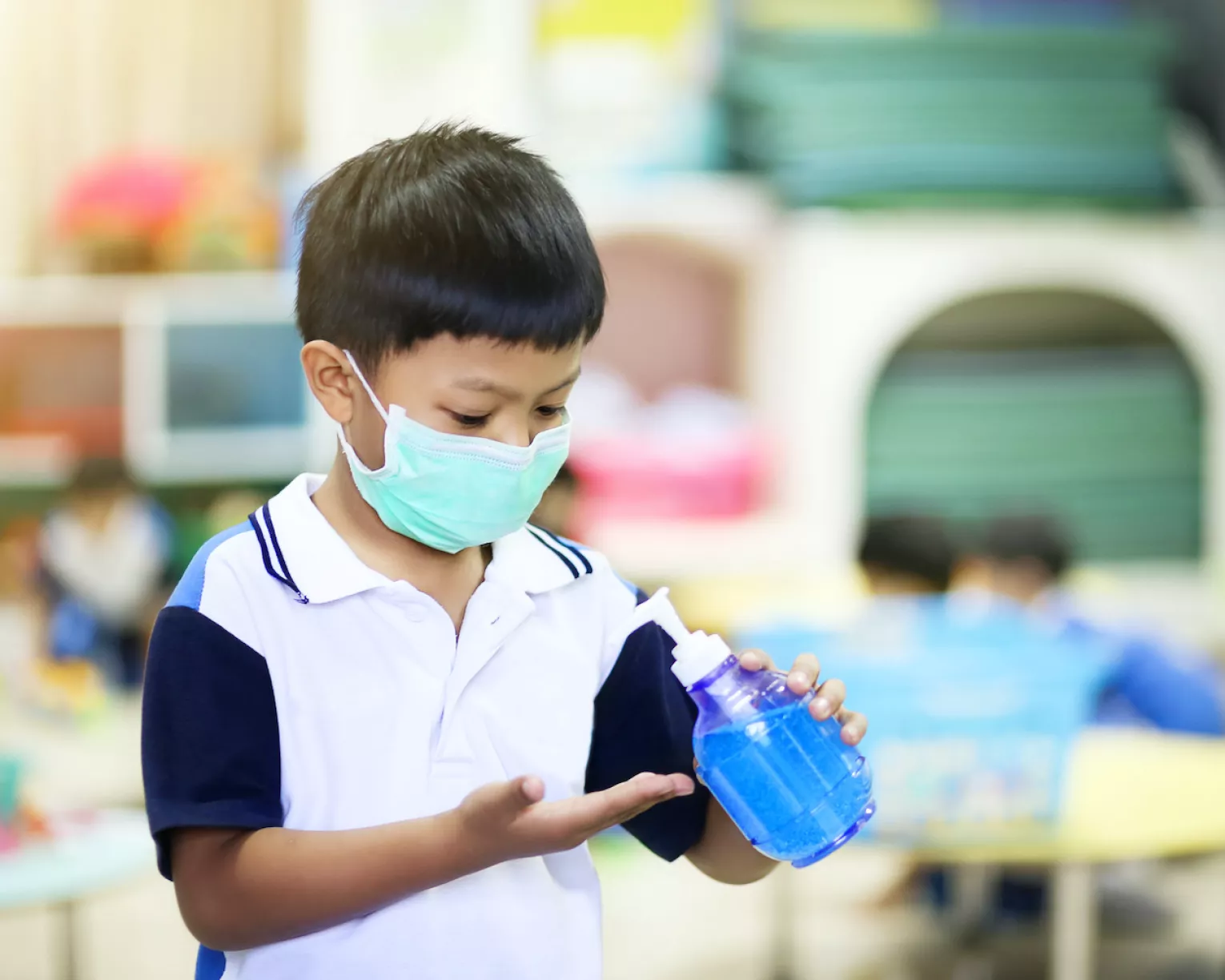MASKS MUST BE REQUIRED.*
The universal and correct use of masks must be required for educators, students, and staff, with exceptions for children under the age of 2 and individuals with intellectual disabilities, emotional or orthopedic impairments, or traumatic brain injury as well as those who support these individuals. Masks should be tightly woven fabrics with two or three layers and should not have exhalation valves or vents. The use of masks with clear panels may be beneficial for those who are deaf or hard of hearing, emerging readers, students with speech disabilities, and English learners. Wearing a face shield without a mask is not recommended.
ENSURE THAT MORE-PROTECTIVE RESPIRATORS ARE USED WHEN NECESSARY.
The universal use of masks does not refer to masks that are considered personal protective equipment (PPE) such as N95 respirators. PPE may be appropriate for individuals, such as school nurses, who require a higher level of protection. For additional information, see the CDC’s guidance on N95 masks for health care settings.
MAKE THE GUIDANCE CLEAR.*
Post signs in classrooms and throughout the school with simple instructions.
- Wash or sanitize hands before putting on a mask and after taking one off.
- Do not touch your mask while wearing it.
- Wear your mask over both your nose and mouth.
- Do not wear a mask when it is wet.
- Do not share or swap masks, and be sure to label your mask.
- Wash reusable masks daily.
- Place used disposable masks in [indicate location of receptacle].
ESTABLISH PROTOCOLS FOR MASK REMOVAL.*
Provide clear guidance for when and where masks can be removed and stored. For example, masks can be stored in a container or plastic bag during mealtime or “sensory breaks.”
For more information, review the CDC guidance and ED Handbook.
HOW TO CREATE SAFE, JUST & HEALTHY SCHOOLS
Ensuring our school communities are safe, just, and healthy places to learn not only protects us from the spread of COVID-19 but also helps us improve school conditions so that our students, educators, and staff—whether Black, brown, or white, Native or newcomer—can thrive. Together, we can advocate for the schools our students, educators, and communities deserve.
Creating safe and healthy schools takes all of us doing our part but also requires that school leaders have processes in place to ensure every student has access to the correct type of mask.
Every student deserves a quality education with well-prepared teachers who meet mistakes with patience. School leaders and educators must have school policies around masking practices that keep restorative justice in the forefront and work to address individual issues in ways that do not add harm to a student’s opportunity to learn and thrive.
Ensuring successful masking practices at schools takes students, educators, staff, and families working together. School leaders must provide essential information about policies and resources clearly and in multiple formats and languages so that the entire school community can support its collective health and well-being. This includes all school protocols and signage.
NEA MEMBERS: ACT NOW
Coordinate with your local association to ensure collective bargaining agreements (CBAs) are followed or revisions are negotiated, as needed, to address masks, masking policies, and masking practices.
If you are covered by a CBA, seek opportunities to work with school administrators to ensure steps outlined here are adopted. In either case, make sure that educators are included in the development, implementation, and review of COVID-19 responses.
Contact your state-elected officials and district leaders and demand that they ensure your school receives the necessary funding for health and safety materials.
Request local policies to enforce mask-wearing in your community to prevent community spread from impacting schools.
Share this guidance with your fellow educators and school leaders.
*Based on CDC guidance and ED Handbook.
Join Our Movement


